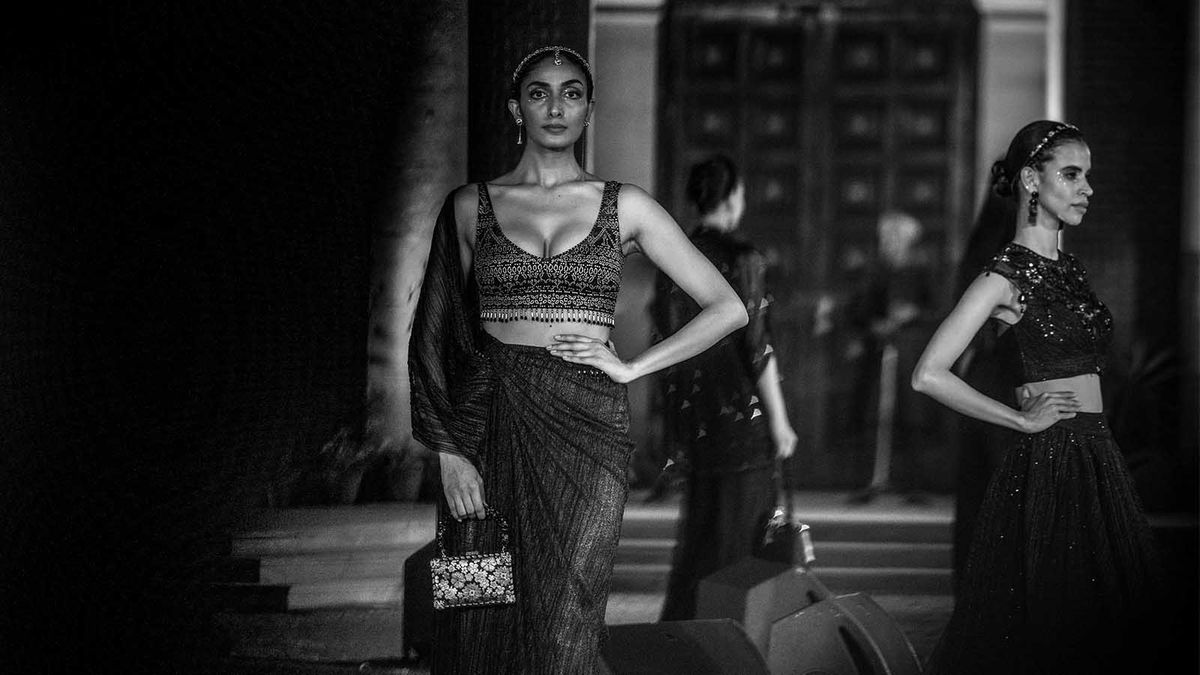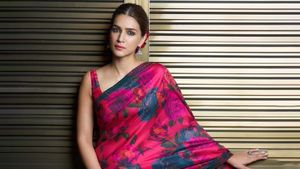Saree, which means 'strip of cloth' in Sanskrit, has always told unique stories about dynamic societies and people. “It’s a beautiful piece of clothing which will always be eternal,” says master couturier, Tarun Tahiliani, also known as the king of drapes.
From concept sarees to saree gowns, these draped ensembles are getting a fresh twist now. “I do not think they take away the original elegance of a saree. The traditionalists will wear sarees, but younger people and NRIs who are not that comfortable wearing one, will wear a saree gown or a concept saree,” he assures.

Tahiliani started his eponymous label 27 years ago. It was his draped saree looks that made Indian fashion a mainstream industry. From the legendary Lady Gaga and Priyanka Chopra to new age actors like Kiara Advani, Kirti Sanon, the Tahiliani saree has amazed everyone. Over the years, he showcased contemporary India and its revolutionary style, rightfully owning what late legendary fashion stylist Isabella Blow called him, ‘Karl Lagerfeld of India’.
Now, a modern Indian aesthetic fuels the designer's brilliant creations, reflecting the way fashion is synonymous with chic looks and comfort. “It is very common for people to go back to those comfortable ensembles after wearing them. But, here it is not at the cost of original sarees. I do not think the revamped versions of sarees take away the original elegance. I think this allows for a whole new market in itself,” he explains. This is also why he’s unapologetic about revamping sarees due to its timeless aesthetic.
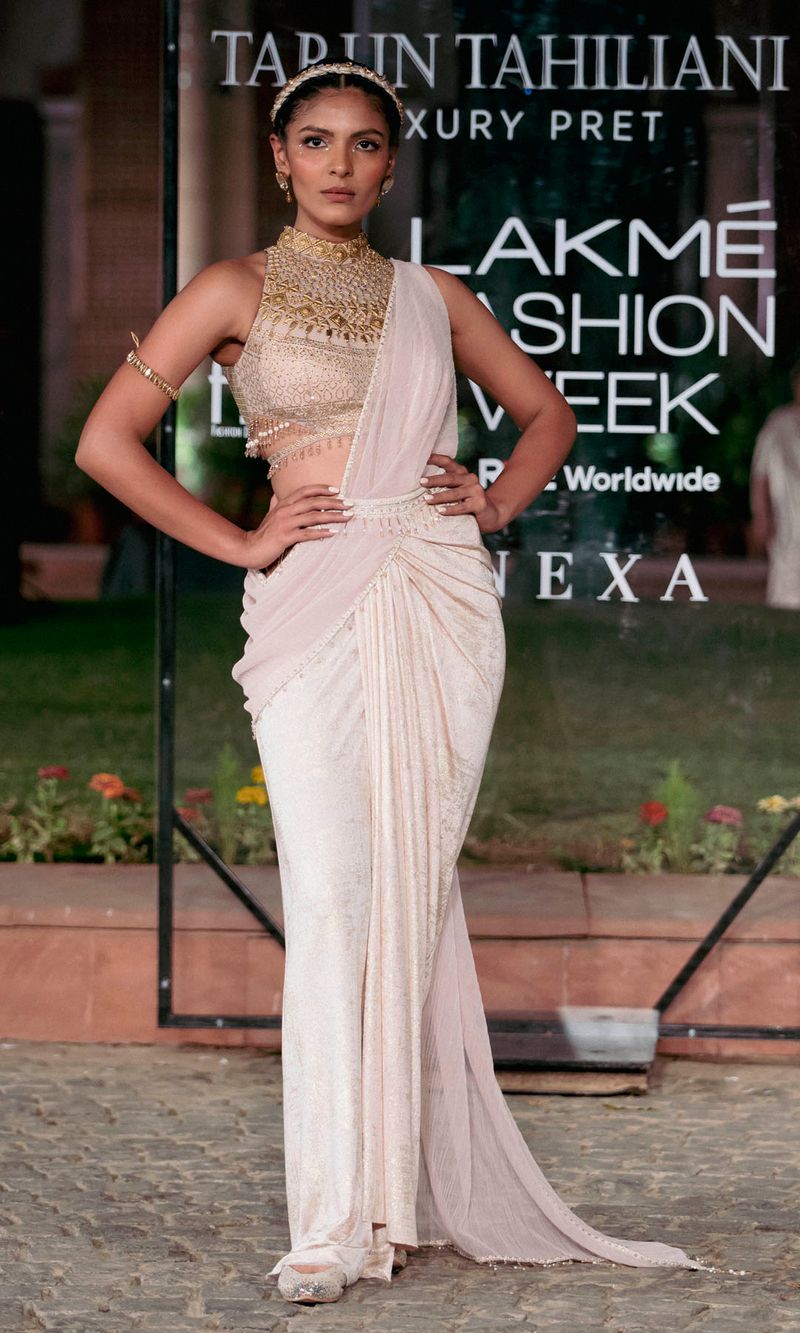
And so, instead of going the typical bridal couture way that he is recognised for, Tahiliani decided to inaugurate the spring-summer season with a luxury ready-to-wear collection. Titled Global Indian, it was unveiled during the recently concluded FDCI X LFW 2022. The designer brought forth garments with various iterations of drapes that fused vitality, functionality, and comfort—all with the timelessness of India’s rich craftsmanship. “The pieces are rooted in tradition, but with a global interpretation and we left no stone unturned to conceptualise our vision for it,” he adds.
And yes, the classical Tahiliani saree finds itself extended beyond its regular construct.
Who is a global Indian?

Tahiliani interprets a global Indian as “the future generation of our country, someone who rooted in culture yet experimental in their approach to fashion. It is someone who does not shy away from embracing their true self and values but has a global outlook all the same.”
The collection echoes the master couturier’s signature drapery with the use of unusual textures, modern cuts and details, zari thread and resham work to create metallic-sheen textures and the generous use of prints through hand-painting.
The drape has been a Tarun Tahiliani favourite and he has given it a revolutionary, lightweight transformation through interesting fabrics—ranging from tulles, poplins, lycra, and georgette. For his Global Indian collection, he has worked with the exquisite mashru silk, woven in Banaras and pashminas, woven with a metallic thread widely used in sarees, shawls and capes. In menswear, the collection consists of bandhgalas, sherwanis, bundi jackets, dhoti pants, and pyjamas.
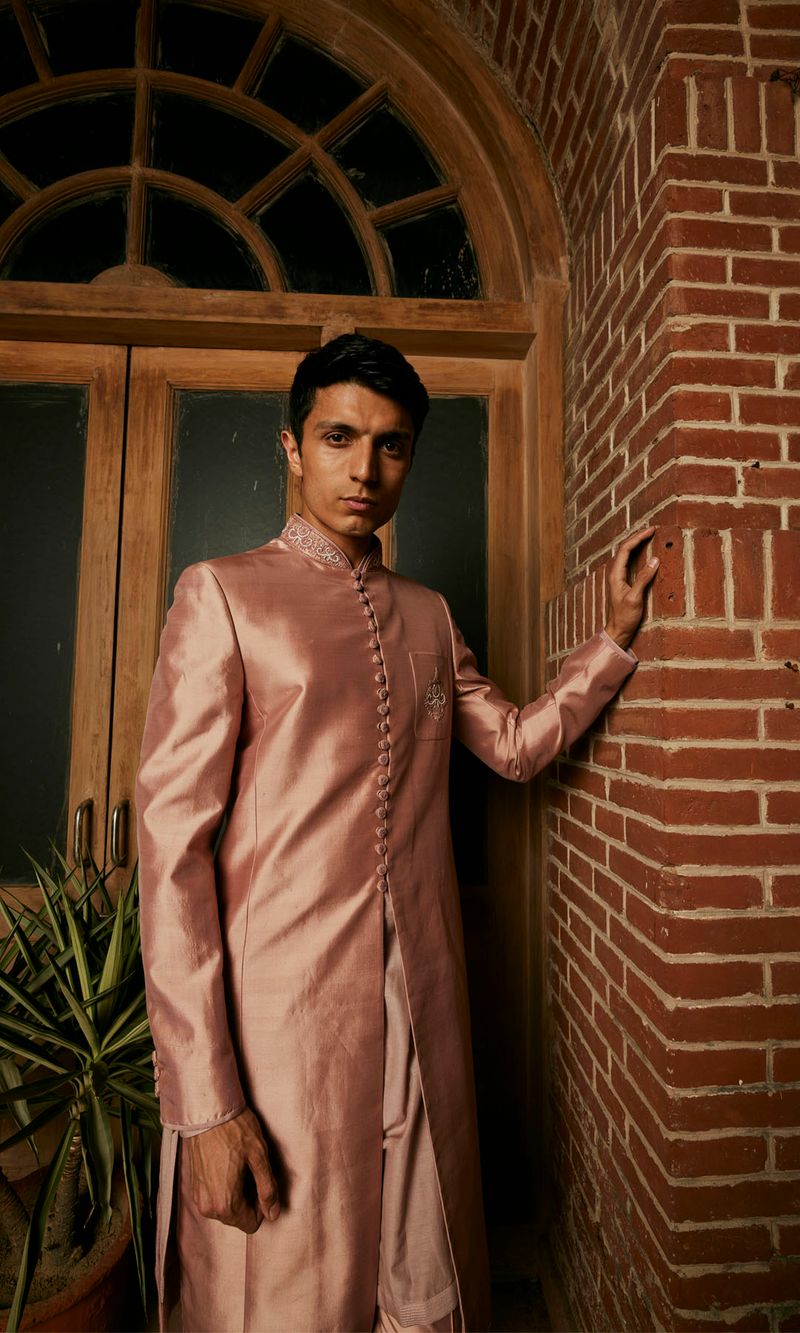
The collection is what maximalist and regal dreams are made of. For womenswear, there are ethereal golden sarees, saree-gowns, concept sarees, and kurtas that are elegant to wear and dance in. “As the design processes, techniques, and trends have shifted, there has been experimentation. Now, we have the saree gown that is not exactly a symbol of modernity as it is a gown that uses a saree as the influence, which has been done before. Indian designers started doing gowns, then Chanel did it—the world has actually taken inspiration from India. The concept saree is a symbol of modernity because it uses a classical choli but allows the treatment of the saree, dupatta, or drape in a different way that allows anyone who is perhaps not used to wearing a saree to go out without 30 pins, have fun, dance, and feel as Indian as the woman next to her in a saree,” the designer explains.
Why does ready-to-wear matter now more than ever?
“The pandemic has brought in a massive change in the way people shop. A great shift was seen towards athleisure clothing, which, in my opinion, most of the big fashion houses would have to ultimately incorporate and shift towards,” he shares. But Tahiliani is somebody who had understood the lucrative business model to stay relevant in the Indian fashion industry long ago.
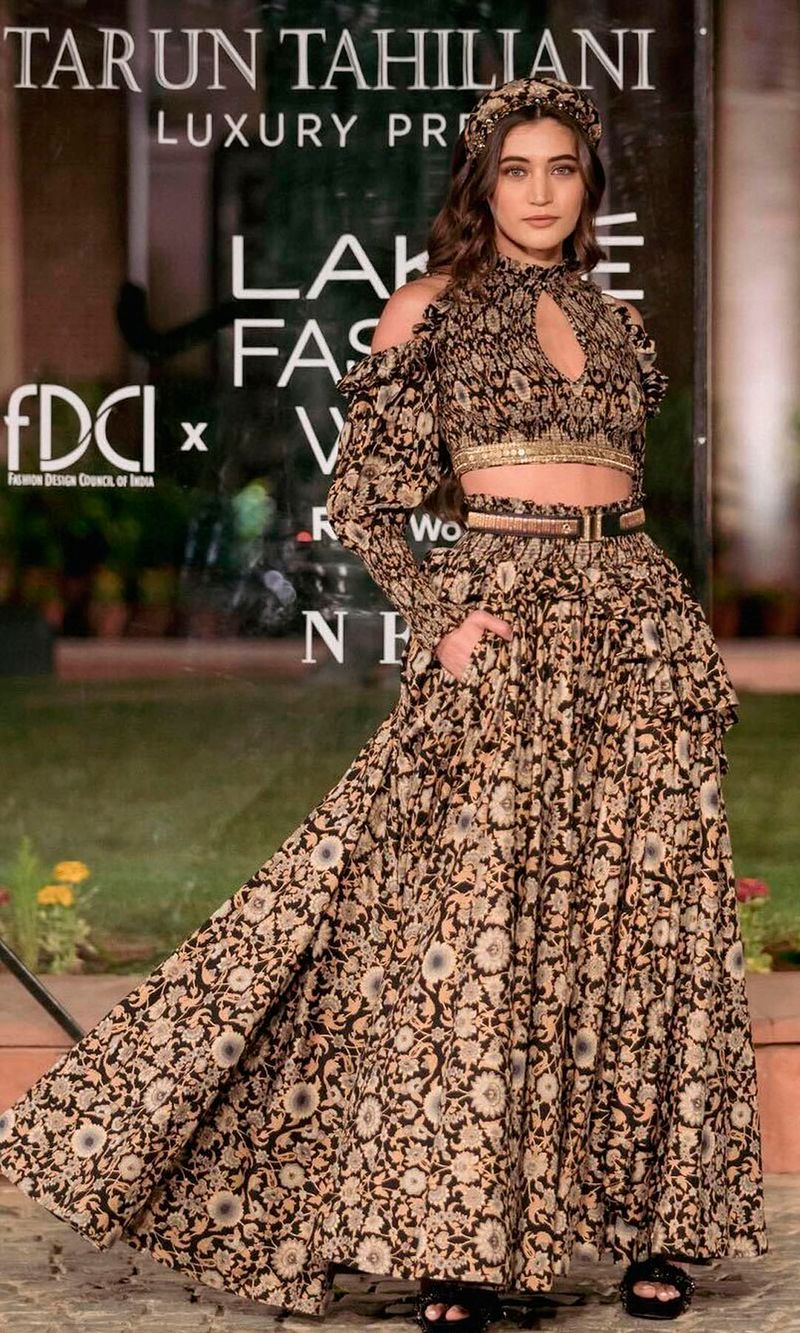
It was the early ‘90s when Tahiliani first forayed into the luxury pret market with the Bhagalpur cotton. “It was truly a perfect example of luxury pret, using relatively inexpensive fabric but it was luxury because of the way it was cut, detailed, pinned-up, and fitted,” he tells. “Even though in India you can buy a muslin saree and turn it into a million dollars, you should also know how to use fabrics that cost thousands of rupees a meter.”
Post-pandemic, the demand for pieces that are easy to mix and match rather than being a part of one full set has soared high. “Fashion is becoming versatile with customers wanting to buy pieces which can be worn in multiple ways rather than being a part of a singular set. The lockdown forced us to accept our individuality and showcase it for the world to see rather than succumbing to the varied norms and trends that the society tries to force upon us,” he explains. In response to this sartorial shift, designers and brands have been quick to provide a new product category while targeting that large crowd who wanted premium pieces on a budget.

“I think people are ready and more than willing to buy ready-to-wear garments now,” assures Tahiliani. With ready-to-wear garments, you're able to observe a couture designer in a new light. The same gorgeous designs are available in a silhouette or material that is more in tune with what people wear on a daily basis. This is a cool factor to keep a design house afloat.
But, for India's fashion industry that’s majorly bridal, the question arises: how can luxury pret or ready-to-wear garments be integrated into pre-wedding or wedding trousseau?
Wedding edit: RTW edition
Tahiliani’s pret-wear collection consisted of a lot of separates that are “easy to mix-match and that’s what makes them luxury pret,” he tells. “I had wanted to return to luxury pret sooner, but due to the pandemic our production was down and we were forced to focus on bridal.”
Separates included trousers, smocked tops, gilets, structured body corsets, kaftans, jumpsuits, and gowns—all beautifully embroidered, lightweight, and versatile enough to be worn to a mehendi or sangeet function. “The collection is luxurious and easily wearable, and has that balance of accessibility and luxury,” he adds.
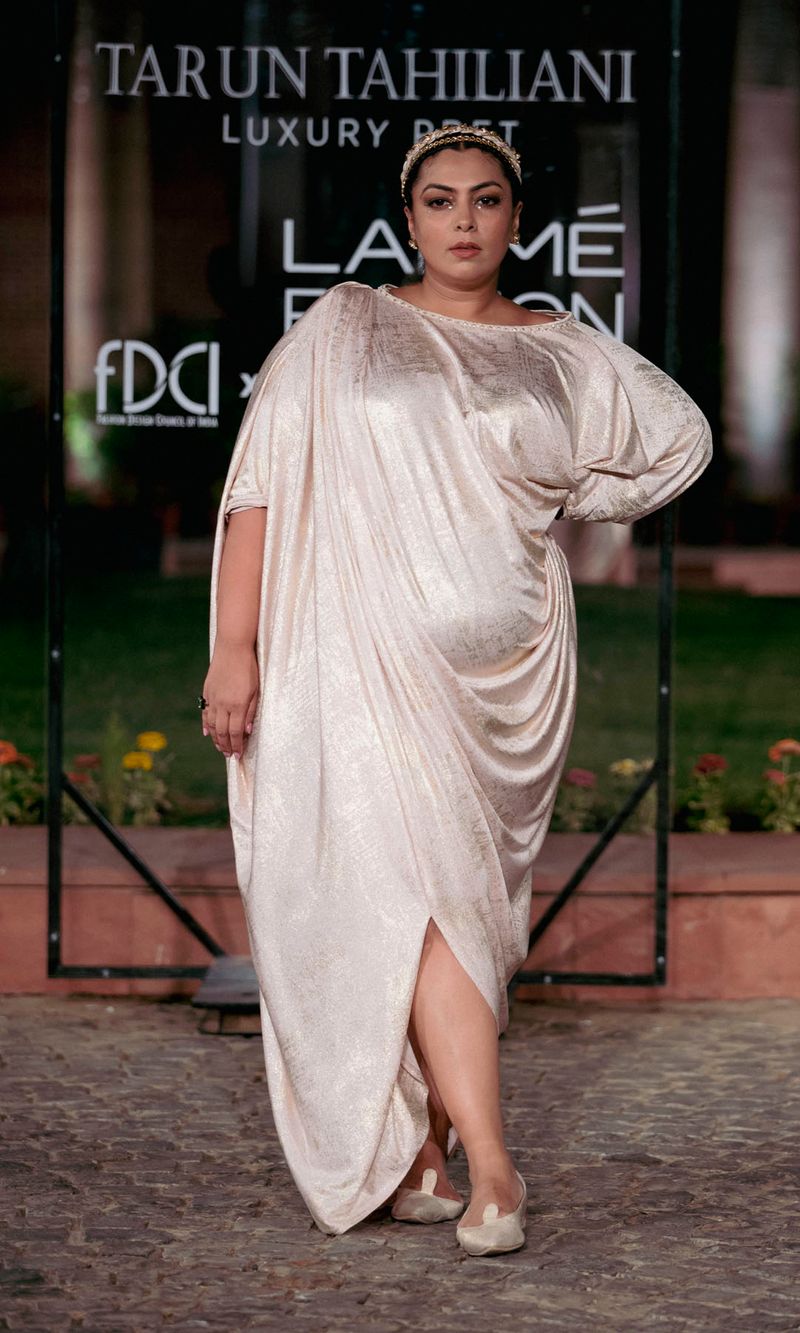
Keeping with the zeitgeist of times, brides and grooms also want to see a representation of themselves in the ensembles. “Brides and grooms who come to us are much more evolved, they are on the lookout for elegance, and wish to see themselves as they are rather than conform to a meditated notion of trying to look royal or a part of a movie. I believe post-pandemic, everyone has finally realised that their biggest role is their own and are trying to be true to themselves—which I think is a beautiful and the biggest trend that I see at the moment,” Tahiliani emphasizes.
Now, wedding trends are also influenced by one of the factors that led to the growth of ready-to-wear: the desire for people to express themselves through their attire. “Each person is different with their own personality and that is what should be showcased on their wedding day, rather than following the trend of the season,” he says.
Yet in the case of styling, Tahiliani notes that sheer veils with long trails are going to continue to remain in fashion. “Another fun trend, which I have noticed is brides coming in with their own baraats as an assertion of their independence—which is absolutely lovely,” he adds.

As busy as the house of Tarun Tahiliani always is, the designer also recently unveiled a new flagship store having an old-world charm in Mumbai's Ballard Estate. It also marks his return to the historic neighbourhood where he grew up. That said, this starts a new vision for the designer’s future filled with memories.


